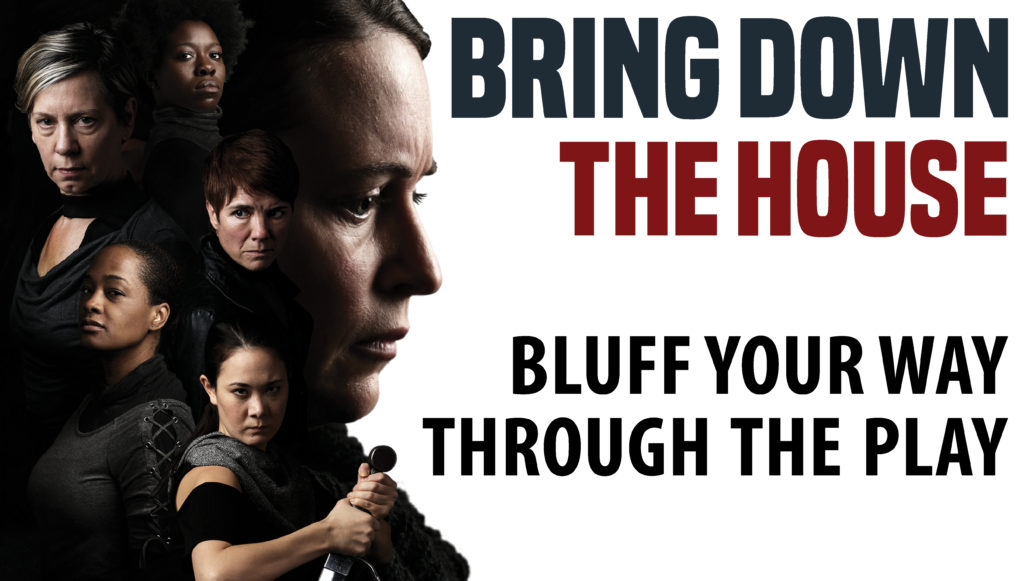
Tracking all the power players in the royal realm can be a bit confusing. We let you know who is important to know about and what to follow in our guide to Bring Down the House – an adaptation of Shakespeare’s Henry VI trilogy.
England’s Game of Thrones
Shakespeare’s Henry VI trilogy is historical fiction. It is a re-imagining of political rivalries, royal intrigue, jealousies, and clashes that tore England’s political system in two. Known as the War of the Roses, this roughly 30-year period of warfare resulted in the capture, disappearance, or death of many English nobles. The bloody feud gave rise to a new royal dynasty that ruled for more than a century.
Red vs. White – Rivals from the same family
The York family (White Rose) and the Lancaster family (Red Rose) trace their ancestry to the Plantagenet House and Edward III who ruled England for 50 years and helped to create it into one of the first superpowers of Europe. Because of the complicated family tree, both have a legitimate case for their royal lineage.
So How Did We Get Here?
Shakespeare wrote four other plays that led us up to this point: Richard II, Henry IV parts 1 & 2, and Henry V. King Richard II was overthrown by Henry IV (both were grandsons of Edward III). Henry V followed on to the throne after his father died. Henry V, through marriage, claimed parts of France under his rule. He died unexpectedly at age 36.
Child King
Henry VI was crowned King of England at 9 months old after his father, the war hero, Henry V dies of dysentery. He was the sovereign of two countries as his father had recently secured much of France. His uncle Humphrey is named lord protector until he comes of age.
Fit to Rule?
Henry VI suffered several nervous breakdowns. He allegedly didn’t speak for an entire year and spent the battle of Albans laughing and singing near a tree. This is how the Duke of York seized power when he was named Lord Protector.
The She-Wolf of France
Margaret of Anjou, Henry VI’s queen, engineered many of the alliances and was essentially the leader of the Lancaster faction against the Yorks. Henry VI’s ill health and instability made him a minor player in the battles.
Musical Thrones
Both Yorks and Lancasters held the throne during the War of the Roses. Some of them ascended to the throne twice. Major battles shifted the rule from one side to the other. And things didn’t really end when one side finally achieved the crown. There were internal factions that desired the royal seat.
All in the Family
Henry VI’s mother, Catherine remarried after the death of her husband Henry V. Henry IV’s half-brothers (Edmund and Jasper Tudor) were both strong supporters of his claim, and eventually his nephew, Henry Tudor, united the two warring houses.
History Out of Order
Shakespeare wrote the first section of his great plays about English over the course of just about two years. Henry VI Part 2 was the first to be written. Henry VI part 3 was written soon after, with Henry VI part 1 written last. Shakespeare then wraps ups events between the warring families with Richard III. He then examines the lineage of kings in a series of “prequels” a few years later starting with Richard II on through Henry V.
Who’s Missing?
Bring Down the House is an adaptation of three plays that could easily take up to 9 hours or more to perform all together. That means some characters and plot lines had to be excised for our purposes. One major character that didn’t make the cut is Joan la Pucelle (Joan of Arc) and her story line. We instead focus on the family drama to create a swifter story.
